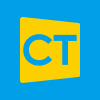Learning trends in 2020: digital transformation and HR
CTgoodjobs' Editor
Published: 2020-01-13
Updated: 2020-01-13 12:14
By Ina Bajwa, Head-Learning & Development– HR, Tata Communications Ltd.
Last year, Tata Communications commissioned a research report, titled, AI and the Future of Work which pointed out that (75%) of executives envision Artificial Intelligence to create new roles in their businesses and essentially this is going to form the future of our workforce. Today, AI also has the potential to free employees from tedious repetitive tasks, allowing them to focus much more on communication and innovation. Work will be more strategic rather than task-based and it will enable employees to enhance their curiosity and creative thinking. As a result, all learning and development programmes need to be designed in a such a manner. Our upcoming learning programmes focus on equipping employees with a higher-level of strategical thinking.
What is an HR role then in L&D?
At Tata Communications, we believe that our employees are our strength and hence HR plays a key role in rolling out various learning models for employees across levels and departments throughout the year.
As HR, our aim is:
• To ensure there is a continuous quest to learn, train and develop, and also that the learning solutions are aligned with the business strategy
• To understand the learning requirements at an individual and team level. Constant feedback on existing and future content facilitates a continuous dialogue on improving the entire learning process
• To focus on creating avenues for employees to practice and learn new skills
At Tata Communications, we believe that our employees are our strength and hence HR plays a key role in rolling out various learning models for employees across levels and departments throughout the year.
As HR, our aim is:
• To ensure there is a continuous quest to learn, train and develop, and also that the learning solutions are aligned with the business strategy
• To understand the learning requirements at an individual and team level. Constant feedback on existing and future content facilitates a continuous dialogue on improving the entire learning process
• To focus on creating avenues for employees to practice and learn new skills
Working skills required in Singapore and Hong Kong
With the advent of digital transformation, every company is fast tracking their business models and also their L&D programmes so employees can keep pace and be future ready. Businesses have realised that they need to bridge the digital divide and hence employees need to be equipped with the required skills. However, there is a lack of appropriate skills sets to match the rapidly evolving pace of digital innovation and this is a challenge faced in both Hong Kong and Singapore.Along with increasing digital penetration, security has become a big concern and something that corporates are looking to address as well. This is another challenge as both markets are dealing with the lack of cybersecurity professionals and this gap needs to be bridged at the earliest. According to a report by Microsoft, cyber-security attacks could result in losses estimating HKD$249.6 billion annually over the next few years. Last year, Hong Kong lost more than HKD$2.2 billion last year from 9,000 cyber-attacks in the first nine months. To ensure such attacks are mitigated, corporates are actively working towards addressing this skill gap by both, training existing staff and by hiring skilled staff in this area.
This is an interesting trend because it also highlights that employees should think about upskilling and invest time in learning new skills. It's not only skills for their current job, but also skills they can acquire for their next / bigger role.
Leaning culture in Hong Kong
We've seen good success with our learning initiatives in Hong Kong which have been recognised externally as well. From a technology perspective, Hong Kong is much ahead of some of the other countries so the need for skilled experts is high in this region.
How to meet management targets in a shifting learning landscape?
HR needs to understand the requirements of the employees. It is a global fact that employees, just like consumers, are looking for content that they can access anytime, anywhere on any device. The kind of ease and access that consumers are now used to in their personal life is the same that they expect in their professional lives.For example, Tata Communications has transformed its learning strategy and made learning digital, virtual and always available. There are a number of skills courseware available, be it high-end technology courseware for product, technology, IT and customer service teams or even a suite of 4500+ courses on Skillsoft across different domains. These are available to all employees at any time and employees have an option to also partake in a complete certification course of their choice at their own pace.

 Discovery Feed is launched!
Discovery Feed is launched!





 Follow CTgoodjobs for the latest career news, hot topics and recommended jobs!
Follow CTgoodjobs for the latest career news, hot topics and recommended jobs!